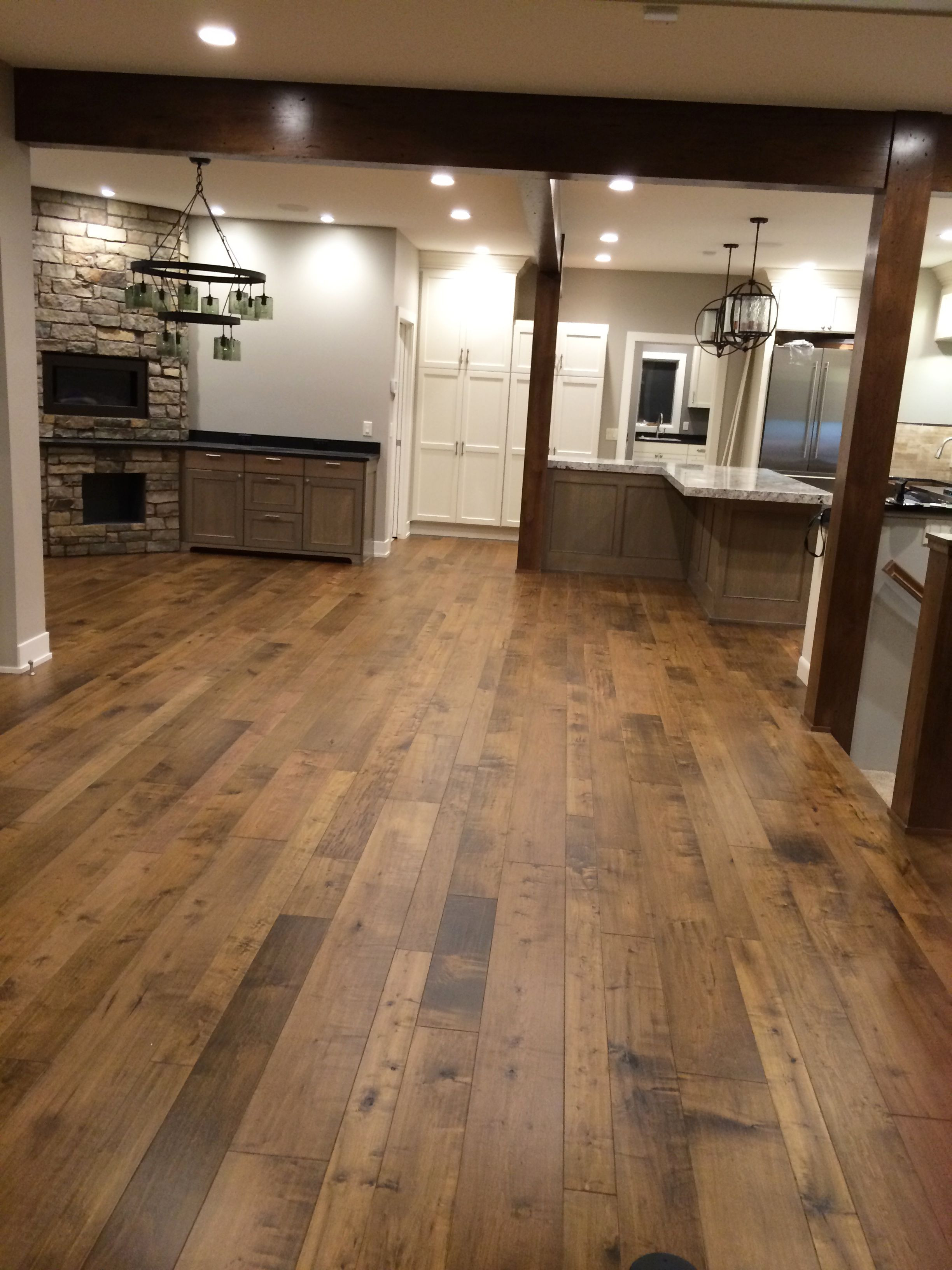Have you ever looked down at your hardwood floors and wondered, “What kind of wood is this?” You’re not alone. The beauty of hardwood flooring lies in its natural variations, each species offering unique characteristics that can leave even seasoned homeowners scratching their heads. Understanding the type of hardwood you have is not just about satisfying your curiosity – it helps you make informed decisions about maintenance, repairs, and even future renovations.

Image: www.rocktherm.com
This comprehensive guide will take you on a journey through the world of hardwood flooring, providing you with the tools and knowledge to confidently identify the species beneath your feet. We’ll explore the key features, characteristics, and even some common mistakes to avoid, giving you the confidence to navigate the world of hardwood with ease.
The Anatomy of Hardwood Flooring
Before we dive into specific species, let’s understand the basics of hardwood flooring. Hardwood flooring originates from the deciduous trees that lose their leaves each fall. These trees have a distinct grain pattern that adds to their visual appeal and durability. The wood is typically cut into planks and then finished with a protective coating to enhance its natural beauty and protect it from wear and tear.
Key Features for Identification
Identifying hardwood flooring begins with observing its unique characteristics. Here are some key features to consider:
- Color: The color of your hardwood floor provides initial clues. The spectrum ranges from light blonde, like maple, to deep browns and reddish hues, like mahogany.
- Grain Pattern: Hardwood grains can be straight, wavy, or even swirling, depending on the species. Straight grains often resemble lines, while wavy grains add visual dynamism.
- Knots: Knots are naturally occurring points where branches once existed in the tree. They can vary in size, shape, and frequency depending on the wood’s origin and the specific tree.
- Hardness: Hardwood flooring comes in varying degrees of hardness, measured by the Janka scale. This scale helps determine how resistant your floor is to dents and scratches.
- Texture: Some hardwoods, like oak, have a pronounced grainy texture, while others, like maple, tend to be smoother.
Common Hardwood Species
Now, let’s delve into some of the most popular hardwood flooring species found in homes worldwide:
1. Oak: A classic choice, oak is known for its strength, durability, and beautiful grain patterns. Oak floors range from light to dark shades of brown and can feature knots and other distinctive characteristics.
2. Maple: Maple is a lighter-colored hardwood that is renowned for its smooth texture and beautiful patterns. Its hardness makes it a popular choice for high-traffic areas.
3. Cherry: Cherry hardwood floors possess a rich, warm hue that tends to deepen over time. Its distinctive grain pattern often features swirls and knots, adding an element of elegance.
4. Walnut: Walnut is another standout hardwood due to its deep, dark brown color and distinctive grain, often showcasing streaks and swirls. It’s prized for its luxurious look and elegance.
5. Hickory: Hickory is a highly durable hardwood known for its strong, rustic character. Its grain patterns can be bold and dramatic, often featuring knots and burls.

Image: www.homestratosphere.com
Spotting the Subtle Differences
While knowing the basic features is crucial, identifying specific hardwood species often involves noting subtle differences:
- Color Variation: Even within the same species, color can deviate significantly based on the specific tree, its age, and the type of finish applied.
- Grain Patterns: Pay close attention to the grain’s direction, frequency, and presence of any unique patterns like swirls or knots.
- Texture: Run your hand across the floor surface to discern the level of smoothness or roughness.
The Significance of Proper Identification
Knowing the type of hardwood you have isn’t just a fun fact; it’s essential for making smart decisions about your floors. Here’s why:
- Maintenance: Different hardwoods require different cleaning and care routines. Some, like oak, are known for their durability, while others, like maple, may need additional protection.
- Repairs: Understanding the species helps you find the right replacement planks if any get damaged.
- Value: Hardwood flooring adds value to any home, and knowing its species can help you determine its worth for insurance purposes or potential resale.
- Refinishing: Specific sanding techniques, stains, and finishes are more effective on certain species than others.
Expert Tips for Identifying Your Hardwood Floors
If you’re still unsure about your hardwood species, consider these expert tips:
- Consult a Flooring Professional: Experienced flooring contractors have a keen eye for identifying different woods.
- Contact a Wood Flooring Inspector: Some companies specialize in identifying hardwood species and can often provide detailed reports.
- Use Online Resources: There are various online databases and image search engines that can help you compare your floor to photos of known hardwood species.
What Kind Of Hardwood Floors Do I Have
The Final Word
Discovering the hidden beauty and secrets of your hardwood floors is a journey of exploration. By understanding their key features, you’ll gain a deeper appreciation for their unique characteristics and make informed decisions for their care and future. Remember, every piece of hardwood flooring tells a story – a story about the tree that once stood tall, the skilled hands that crafted it, and the home it now graces. So, go forth, embark on your hardwood discovery, and appreciate the natural wonders that lie beneath your feet.






